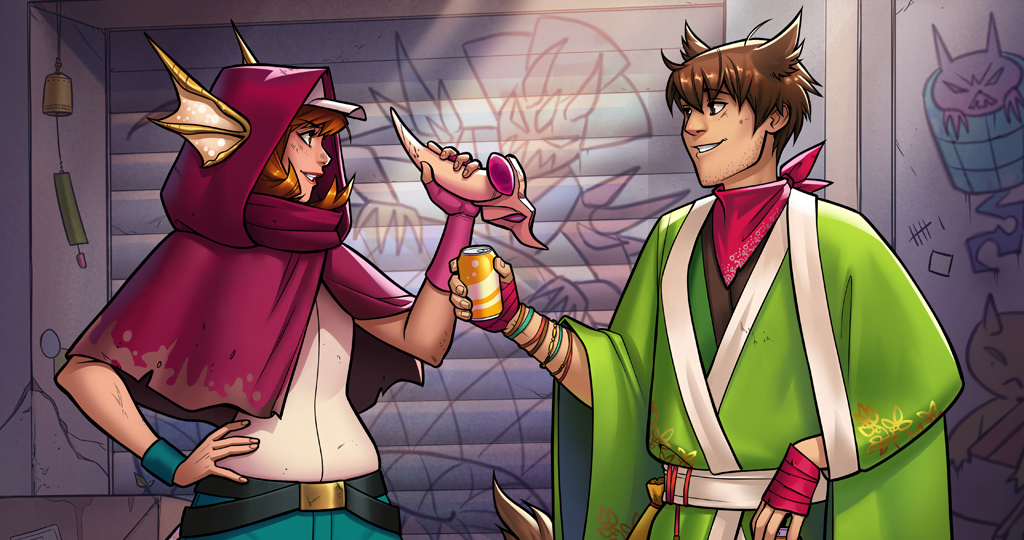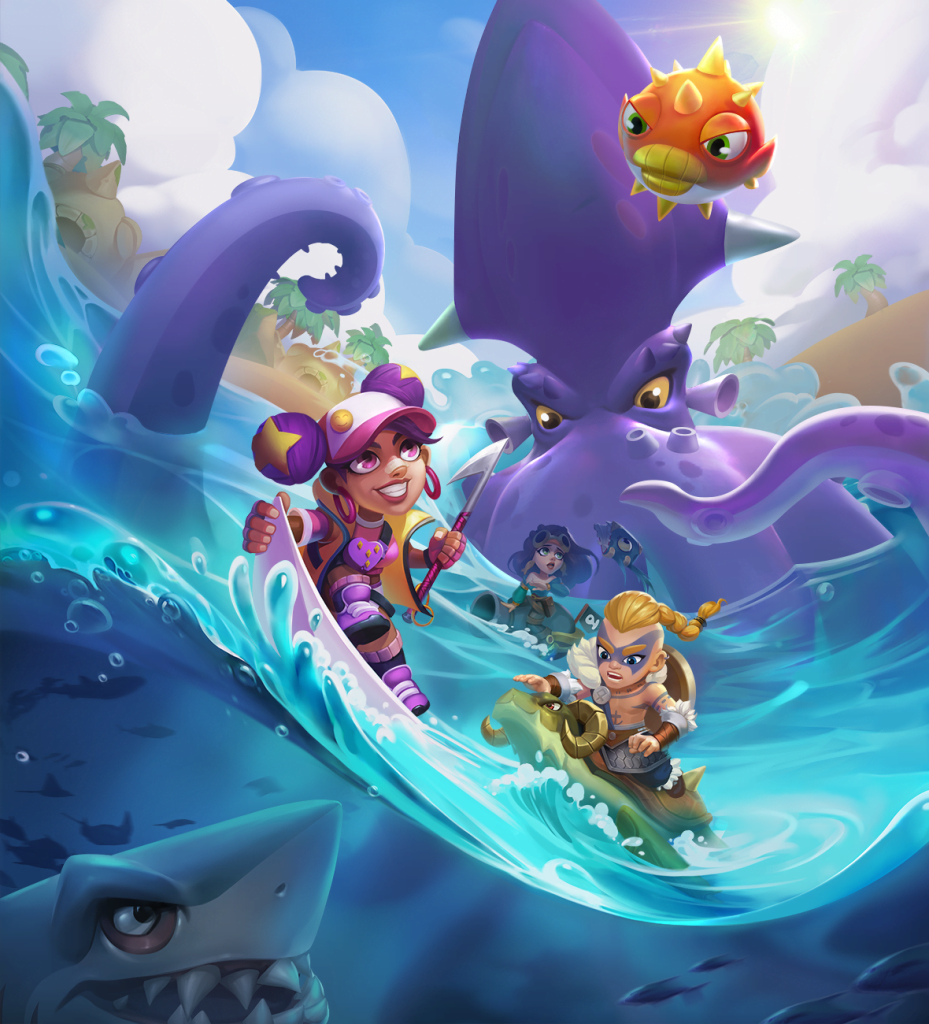




The Argonauts are a unique team in that they’re mostly based outside of Wrocław, with most of the 30+-strong team working from Warsaw, Bucharest, and remote locations on products that are a bit outside of TSG’s usual bread-and-butter.
The team is an independent studio currently creating Fishing Masters, an idle RPG where players join teams that navigate various worlds enriched with unique creatures and many artifacts to collect. In this game, fishing has been reinvented using special weapons, magical skills, and different rides, creating a water adventure for all!
So, how does the team go about creating the game?

“The biggest challenge was to shape our operations around the idea of people who live far away from each other. We somehow found a solution by making this obstacle a part of our culture, and now we’re a full-fledged team.” Francis Leo Tabios, Creative Director, says.
What’s the exact answer to the challenge?
“We’re working in a partially customized version of Scrum, using team divisions we call Squads.”Squads are cross-functional and include people from different departments, allowing designers, artists, and developers to cooperate closely and focus on their goals without a big layer of bureaucracy and long sync meetings between them and their goal.” Federico Bozzo, Technical Director, explains, “Squads are all about ownership, accountability and communication, making it much easier to cooperate in our remote setup.”
Those aspects are also highlighted in the team’s art team, which is divided into a few teams dealing with various aspects of art production.
Concept/2D Artists create pre-production backgrounds, assets, and designs. 3D artists model, rig, texture, and sometimes animate the assets. The Tech Art team integrates them into the game, providing a bridge between developers and artists but also creating atmospherics and VFX. Finally, UI Artists work closely with designers and the UX team, creating the game’s interface.
“My role is to organize the tasks, considering production needs and team status. Along with the Art Director, I give guidance and feedback on art direction, game feel, and the overall look of every asset,” Marina Couso Atalaya, Art Lead, explains, “the most important thing, however, is that the artists understand the style and requirements themselves so that they can take ownership and make their own decisions, as long as they fit within the directions.” – Marina adds.
This system also allows the team to tackle challenges more efficiently.
“Our big challenges are always to estimate at the beginning of the production of the next update; what do we do next, do we have capacity? and more than anything: figuring out what has to be done asap and what can wait in order to make a product that is consistent and engaging. How do we solve this? Having talks between departments, kickoffs, quick brainstorms and ideas iterations, preparing briefs and trying to approve the scope as fast as we can, reviewing and being flexible on it when needed.”
However, Federico believes that the biggest challenge is already behind the Argonauts.
“We’ve always said: ‘to create great games, you need great teams,’ so giving birth to such a team has been our biggest focus in these two years and a half. The biggest challenge was being able to do so while also building a new product from scratch in the meantime! Investing in great talents that also aligned with our team culture was the way to go, and it is now paying off.”



All in all, the Argonauts, being TSG’s semi-independent studio, are in a position to do special things. What makes them unique? We suppose that the team has the best answers.
“I never worked with such an experienced and top-notch team. All the Argonauts are highly motivated, and the team spirit is higher than ever. Having great talents coming from all around Europe, working in different offices or fully remote, while at the same time being such amazing team players is unique!” Federico tells us.
These top-notch talents allow the team to explore their creativity in a safe environment.
“What makes our culture unique is that everyone is given a lot of freedom in terms of creativity; every idea is welcome, reviewed, and taken into consideration. We don’t build pyramidal structures, instead, we only maintain a basic hierarchy in order to break down the tasks and share responsibilities to avoid the chaos burning us out. Major decisions are made by the product owner and designers, but an artist can have awesome ideas that are immediately taken to the top.” Marina adds, “We don’t have a dress code, boundaries, strict rules. We celebrate our differences, and that enriches our experience of working with people from different cultures.”



So, if you ever need a recipe for a perfect remote team, the not-so-secret ingredients seem to be rooted strongly in our values, Own It, Trust and Dare to Explore.
“Our team is highly motivated and engaged. They are really excited about what we’re creating, and have a lot of ownership in what they do. They are the ones who say what can be done and what cannot. A task is never imposed on them, and they get to estimate the time they need , and the method or workflow they need in order to complete it.” Marina says.
“There is a lot of mutual respect and a culture of trust and ownership,” Federico adds “For this reason, the organization operates in full transparency. Team members are always aware of our long-term goals, successes, and what went well and what didn’t. That trust is also reflected in our relationships as colleagues, as we always give open and honest feedback.”
“Being part of the Argonauts means inspiring each other to try and break new ground in this fast-changing industry. So far, I’d say we’re doing it pretty well!” Francis summarizes.


“Services” is a broad name for a group of seven sub-teams: Support, VIP, Quality Assurance,…
read more
One of our 5 core values is #GrowTogether. It’s a value that drives our everyday…
read more
Anyone who has ever moved countries, be it for a job, for school, or for…
read more
Have you ever wondered how mobile games are created? Which skills and what mindsets drive…
read more